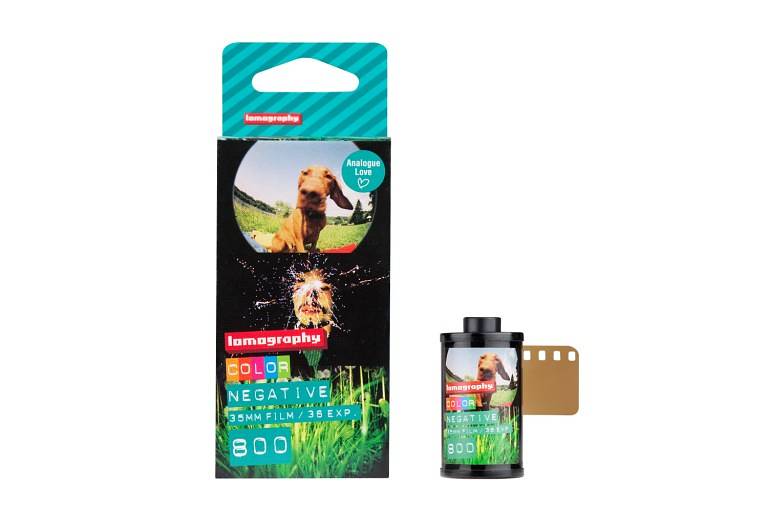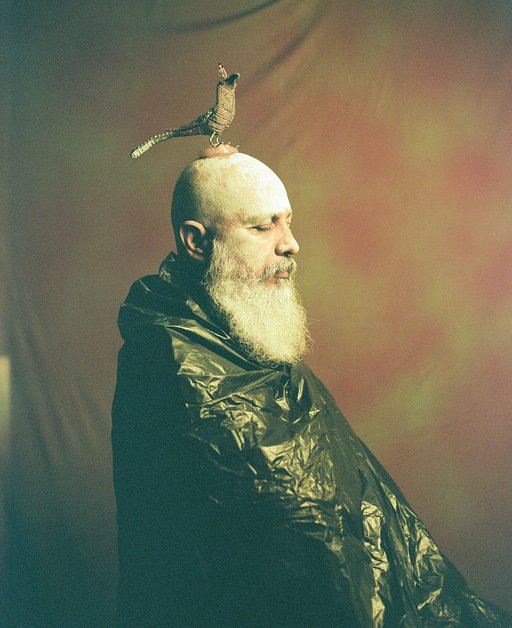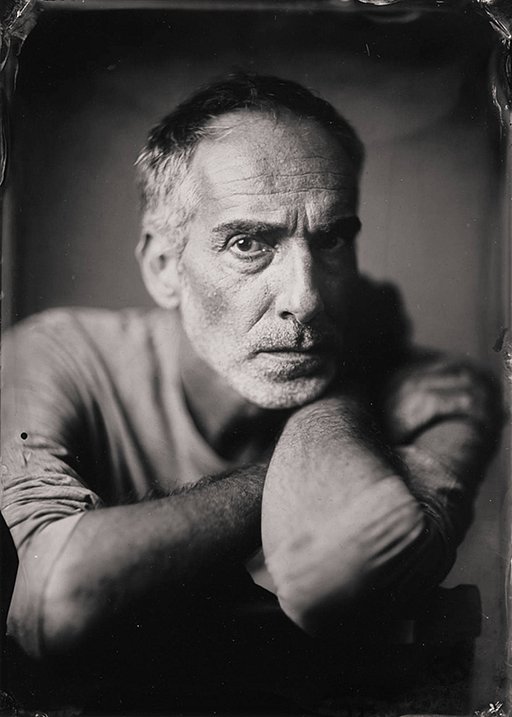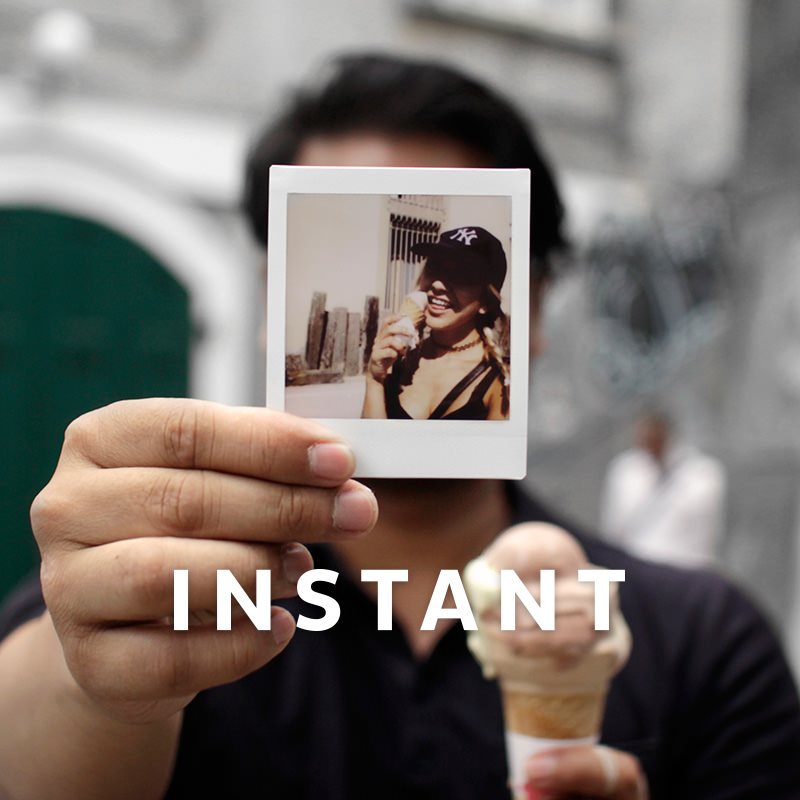Kate Anderson – Capturing Quiet Beauty with Film Photography
2 13 Share TweetKate Anderson's photography captures the mundane and breathes new life into it. Her range as a photographer is vast, as she has covered many genres, from street photography to commercial shoots but one thing that ties it together is her ability to bring out a warmth that you can feel in every photo. In this interview we get to know more about Kate's analogue journey, how her firm sense of visual identity has enabled her to become such a versatile photographer, and what pride month means to her.
Greetings! Can you introduce yourself and tell us how you started your analogue journey?
My journey into the world of analogue photography began with a generous and sentimental gift from my dad back in 2018 – my grandfather's old Olympus OM-1. At first, I dabbled with it sporadically, capturing fleeting moments during trips and gatherings with friends; however, it was the early months of 2020 that truly ignited my passion for analogue photography. As the world slowed down and the pandemic confined us to our immediate surroundings, I found solace in the simple act of taking walks around my Berkeley neighborhood with my trusty Olympus in hand. Amidst the quiet streets and golden afternoon light, I discovered the enchanting allure of film photography.
At the time, this newfound passion was not only nurtured by the camera itself but also by the experience with photography in my family. My dad, once an avid film photographer in his youth, passed down his love for the craft to me. Likewise, my mom, a skilled photographer and fine art printmaker, shared her expertise, instilling in me a deep appreciation for the artistry and technical aspects of photography. I consider myself incredibly fortunate to have inherited not only cameras but also a wealth of knowledge and guidance from my parents and it feels so special to be able to share this passion with them.
What kind of gear do you usually use when shooting?
My go-to camera is undoubtedly my beloved Olympus OM-1, a truly faithful companion on many adventures. Not one for switching out lenses, my Olympus is always outfitted with my F. Zuiko 50 mm lens. I also often shoot with my mom’s old Honeywell Pentax Spotmatic II and, when it comes to medium format, I’ll break out my Twin Lens Minolta Autocord. The Autocord, with its 6x6 frames, offers a different perspective and a much slower shooting experience but provides that rich and crisp detail medium format photography provides.
When it comes to film stocks, I shoot a lot with Kodak films, particularly the reliable workhorse that is Ultramax 400. Its versatility and consistent performance make it an indispensable part of my toolkit, serving me well in a wide range of shooting conditions. However, I also really enjoy shooting Lomography CN 800 and have loved adding it to my rotation of stocks.
How would you describe your photography style?
I would describe my photography style as a celebration of the ordinary, finding beauty in the simplicity of everyday scenes. I really cherish the tangible nature of film photography as it allows me to capture the essence of a moment with depth and authenticity. There's a warmth and nostalgia inherent in film photography that permeates through my images, inviting viewers to connect with the emotions and memories preserved within each frame.
I’d also say my style is all about spontaneity and embracing what catches my eye when I'm out and about. While I wouldn't label myself as a gear expert, I'm passionate about capturing the quiet beauty of the world around me. My aim is to convey a sense of intimacy, familiarity, warmth, and vibrant color through my images. It's about capturing moments that resonate with me and sharing that feeling with others.
Looking at your work, you seem to have done everything from portraits, to street, to commercial photography and even weddings! Is there a genre of photography that most resonates with you and why?
Out of the wide variety of genres I like to shoot, the genre of travel photography resonates with me the most. There's a profound joy in journeying to unfamiliar places and capturing their essence with eager, open eyes. It's a privilege to document the worlds of others. It's such a privilege to capture the world of other people. As a guest in a space that doesn't belong to me, I have the opportunity to capture that world and its unique energy in a way that feels both new and nostalgic at the same time.
How are you able to balance your style of photography with all these different genres?
I think that I'm able to balance my style across all these different genres of photography because, no matter where I am or what I'm shooting, I'm consistently drawn to similar elements. Warm and vibrant colors are a very central theme in my work and this focus on color helps unify my style, allowing me to maintain a cohesive artistic vision across a pretty diverse range of subject matter.
I love that most of the people you photograph in your portraits are queer. For you, how important is it to photograph the queer community?
It's important to me to focus on photographing queer individuals in my portrait work because representation matters deeply. I want people to see themselves reflected in my work and to feel the care and love I have for my community. Capturing the diverse experiences and identities within the queer community is a way to affirm and celebrate who we are.
I've had the privilege of shooting a queer wedding and engagement shoot, and these experiences have reinforced the significance of creating a safe and comfortable environment for my subjects. Ensuring that the people I photograph feel secure and respected is paramount, and I'm grateful for the opportunity to provide that space. I would really love to do more queer couples, engagement, and wedding photography because these moments of love and connection are profoundly important. By showcasing these stories, I hope to contribute to a broader representation of queer love and joy, allowing others to see themselves in these beautiful, intimate moments.
How has being queer affected your photography? Has there been any instance or memory where being who you are helped you find your voice in photography?
Being queer is a fundamental part of who I am, but it also isn’t the most important thing about me - it’s just part of what makes me, me - if that makes sense! However, I do think that being open about my queerness in the film photography space is crucial because representation truly does matter and visibility can inspire and affirm others within the community, and that's something I’m passionate about.
One of the most rewarding aspects of being open about my identity is the connection it’s fostered with other queer film photographers in the creative space. This openness has allowed me to meet such incredible individuals who provide a wonderful sense of community and constant inspiration both personally and creatively.
How important is it for women, trans people, and non-binary people to be part of the photography community and for them to be recognized?
Visibility for women, queer, trans, non-binary, and BIPOC photographers is essential in the world of photography. When the majority of the work shared and recognized comes from white-cis-male photographers, we lose out on the rich diversity of narratives, stories, and backgrounds that make photography so powerful and meaningful. Often you hear the argument “It’s about the photo, not who made it”, but it's really not just about the art itself but also about the artist—their identity, experiences, and perspectives add invaluable depth and context to their work. Photography becomes truly special when it reflects a wide range of human experiences, and that requires embracing and amplifying the contributions of diverse creators.
Which photographers have been big influences for you in your own work?
My photography is heavily influenced by the works of Stephen Shore and Justine Kurland, whose distinct styles and perspectives resonate deeply with me. Shore's keen eye for capturing the beauty in the mundane and Kurland's exploration of American landscapes and narratives inspire me to seek out authenticity and storytelling in my own images. I’m also constantly inspired and influenced by my peers and friends in the photography space.
What's one important lesson you have learned over your photography journey that you would want to share with the community?
When I first started shooting film, I had a scarcity mindset, feeling like every frame was so precious that I couldn't waste a single one. But when I allowed myself to shoot more freely, experiment, and take shots I wasn't 100% sure about, I began to experience real growth. This shift in mindset helped me better understand what I truly enjoyed shooting and also accelerated my technical skills.
I do want to acknowledge that I'm in a place of privilege to shoot this way because film is getting more and more expensive. However, embracing a more open and experimental approach to photography has been transformative for me. It’s important to not be afraid to shoot all sorts of things and take creative risks, as it’s through this process that we really discover our unique style and improve our craft.
For you what makes a good photograph?
For me, a good photograph has a clear composition, an interesting subject, and vibrant colors that draw me in. It's hard to put into words, but I can tell when a photo resonates deeply with me the moment I see it. The composition needs to be well-structured, guiding my eyes through the image smoothly and the subject should be compelling, sparking my curiosity or emotions. And those vibrant colors—they just bring the whole picture to life, making it stand out and captivate my attention.
You mentioned that you like shooting with Lomography Color Negative 800 film. Have you used any other Lomography products?
I've shot Lomo CN 400, but my absolute favorite is Lomo CN 800! The tones it produces are fantastic, and I've had a lot of fun using it in various conditions, from low-light evenings to bright sunny days out at the Marin Headlands. The colors have such a warm and dreamy quality that I really love and I look forward to shooting a lot more of it as we head into the summer.
As we celebrate pride month this June, what does this month mean for you?
Pride Month means a lot to me. It's a time to celebrate the wide variety of folks in the queer community, build connections, honor those who came before us, and dream big for the future. In simpler terms, it's a moment to turn celebration inward and find the beauty in ourselves and the many unique aspects that make us who we are. Like I said before, being queer is a huge part of my identity, but it's not the only important thing about me. It weaves itself into the intricate web of my life and is something I’m really grateful for and this month gives me the space to celebrate that.
We thank Kate Anderson for her warm and lively photos. Be sure to keep up with her on her Instagram.
written by rocket_fries0036 on 2024-06-29 #culture #people #travel #street #portrait #usa #north-america #queer #cn-800 #lgbtqia #kate-anderson











































2 Comments